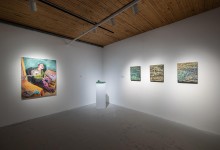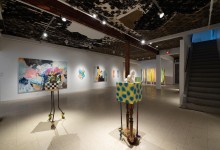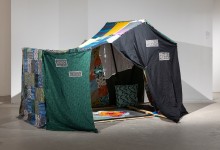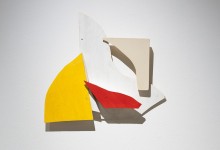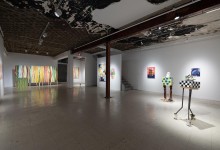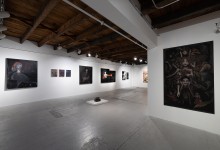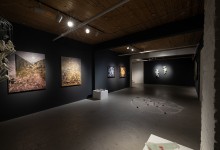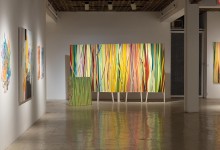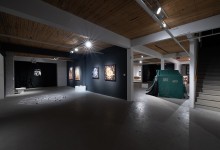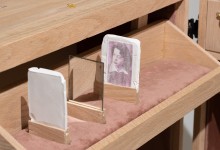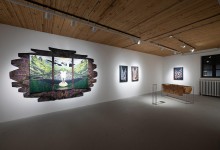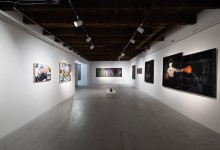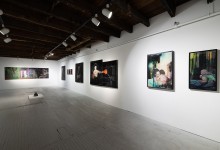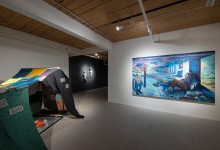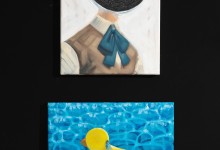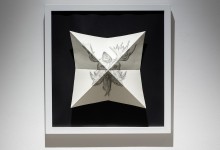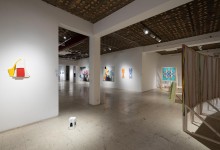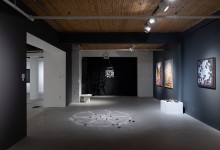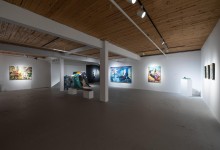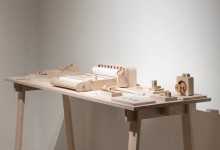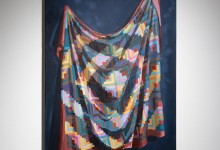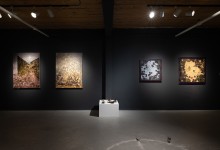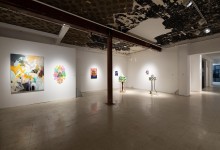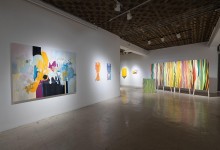Opening reception: Saturday, July 15, 2023 from 3 p.m. to 5 p.m.
Fresh Paint / New Construction – 19th edition
Artists: Hamid Amiri, Maryam Bagheri, Héritier Bilaka, Mathieu Lef Bouchard, D’Andrea Bowie, Charles Boyer-Cazelais, Tyler Burey, Colin Canary, Ferhat Demirel, Jacinthe Derasp, Chanel DesRoches, Claire Drummond, Lucy Gill, Joanni Grenier, Brandi Heilman, Anne-Sophie Jetté, Camille Labranche, Erica Mae Lepiten, Jacob Lepp, Mahdi Mahdian, Nasim Makaremi Nia, Gillian O. Petten, Laura Pohl, Marie-Pierre Ranger, Shannyn Reid, Olivier Roscanu, Bashar Shammas, Morgan Steeves, Leslie Sweder, Sylvia Trotter-Ewens, Sampson T. Vassallo, Elisa Vita, Risa Witten.
The participating universities : Alberta University of the Arts, Calgary (AB), University of Regina (SK), University of Manitoba (MB), York University, Toronto (ON), Université OCAD, Toronto (ON), Université d’Ottawa (ON), Université Concordia, Montréal (QC), Université du Québec à Montréal (QC), Université Bishop’s, Sherbrooke (QC), Université Laval (QC), NSCAD University, Halifax (NE), Grenfell Campus Memorial University (NL).
Text by Beatrice Larochelle
The group show Fresh Paint / New Construction is an annual event not to be missed. Every July at Art Mûr, many Canadian universities open the doors of their visual arts workshops. They offer us an insider tour of their students’ fascinating works in sculpture and painting. It’s an exceptional opportunity to discover the most emerging practices on the Canadian art scene and the future generations of professional artists to come. These new artistic practices reinvent and challenge the limits of the mediums with which we are already familiar, but above all, they respond to each other. Of particular interest are the themes and plastic vocabularies that transcend the geographical boundaries of these universities.
For this nineteenth edition, a strong textile proposal is deployed in the gallery space, starting with the embroidery work of Shannyn Reid (York University). Playing on our conceptions of the useful and the disposable, Reid reproduces familiar objects of lesser value in delicate embroidered fabrics. The result is a series of so-called “soft sculptures” that divert our reference points from materiality. Maryam Bagheri (University of Manitoba) ingeniously blends acrylic paint with weaving in her geometric paintings mounted on handmade looms. In the cut-out sections of the stretched canvas, the brushstroke is subtracted by the textile fibers.
Gillian O. Petten (Grenfell Campus Memorial University) uses the quilt method to create a refuge in her work A safe space for an unsafe mind. Drawing on the imagination of the blanket fort built as a child, Petten creates a shelter for his mental health. Laura Pohl (Bishops University) instead adopts the quilt as the subject of her paintings. Stemming from research into the history of the American quilt, her acrylic draperies reclaim traditional motifs in a clever exercise of light and movement.
Still in painting, many of the artists in this cohort work with abstraction, each bringing a fresh take on the process. Leslie Sweder (Grenfell Campus Memorial University) and Jacinthe Derasp (UQAM) use lines and waves repetitively on canvas, creating distinct patterns reminiscent of organic elements. Tyler Burey (OCAD University), for his part, transcribes abstract forms onto Plexiglas. These are very similar to the stains on the Rorschach test, but in a colorful, translucent style; the artist’s way of reflecting on queer bodies.
Abstraction also manifests itself in sculpture in this 19th edition. Jacob Lepp (Concordia University) embraces the process of improvisation to construct his plywood and felt installations. Reappropriating scraps of unused wood and dyed wool, Lepp transforms these materials into protective nests, or temporary scaffolding. Mathieu Lef Bouchard (Laval University) takes a similar approach: collecting a variety of building materials, he shapes sculptural objects in an intuitive and poetic way.
Collecting found materials and gleaning objects are also methods used by UQAM students Joanni Grenier and Anne-Sophie Jetté. Through excursions to abandoned marble and limestone quarries, Grenier carves and intervenes in a crude manner on the stones collected. In return, Jetté offers us highly detailed objects of uncertain functionality. Gathering archives and memories of a childhood past, or perhaps constructed from scratch, the artist creates cabinets of curiosities and wooden instruments. These evoke the feeling of entering the workshop of archaeologist in the midst of research.
Finally, this incursion into the teeming universe of the various visual arts departments of these universities gives us privileged access to the artistic practices of tomorrow. We discover sensitive responses to current world issues, and aesthetic proposals imbued with great creativity.



